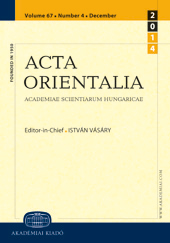Medieval Daoist Ordination: Origins, Structure, and Practice
Medieval Daoist Ordination: Origins, Structure, and Practice
Author(s): Livia KohnSubject(s): Anthropology, Cultural history, Non-European Philosophy, Theology and Religion, Comparative Studies of Religion, History of Religion
Published by: Akadémiai Kiadó
Keywords: ordination; blood covenants; Buddhist ceremonies; pledges; precepts; codes; transmission myth; rites of passage;
Summary/Abstract: Medieval Daoist ordination developed under Buddhist influence in the fifth century, but retained models of ancient Chinese blood covenants. While following the Buddhist model, which was essentially a membership ceremony, in its formalities and overall organisation, in its essence Daoist ordination was an empowerment and transference of allegiance, not from the family to an overlord, but from the world to the celestial realm. Daoists through ordination do not just leave the family but become active members of an otherworldly administration, with all the powers and obligations of this role.
Journal: Acta Orientalia Academiae Scientiarum Hungaricae
- Issue Year: 56/2003
- Issue No: 2-4
- Page Range: 379-398
- Page Count: 20
- Language: English
- Content File-PDF

